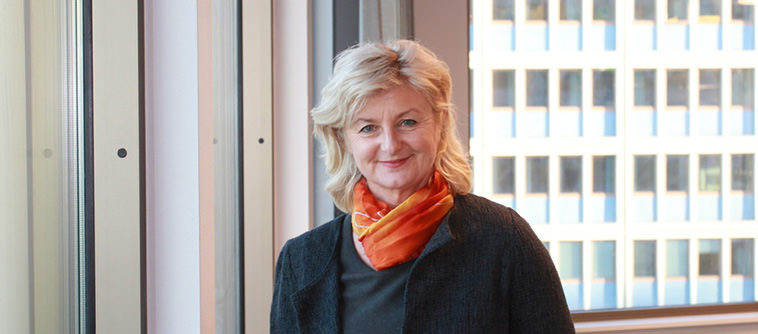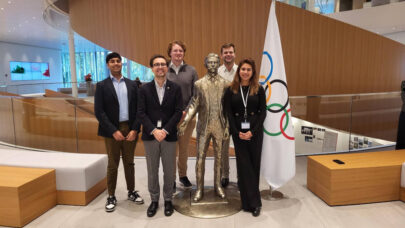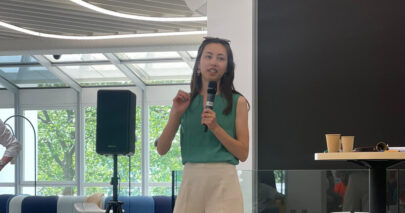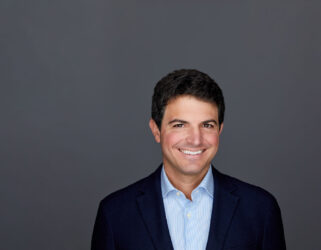
What do you do when you are chosen to kick-start the digitization of a global oil services giant? Ann-Christin Andersen called one of her old professors in Switzerland.
“When I started in my new role, nobody had a clear recipe of how to undertake a digital transformation of a large corporation. That’s why I chose to work closely with academia and got in touch with Michael from IMD in Switzerland”.
The quote belongs to Ann-Christin Andersen, who moved from her role as Chief Executive for Norway to current Digital Director Worldwide for the oil services corporation TechnipFMC a little over a year ago.
The Michael she refers to is Michael Wade, Professor of Innovation and Strategy at IMD in Lausanne. He is also the Director of the Global Center for Digital Business Transformation, an IMD and Cisco initiative. Wade has written a several books on how corporations should approach digitization and transformation, including the well-known Digital Vortex.
Describing her starting point as she became the company’s first Digital Director and sought to kick-start their digitization efforts, Andersen comments:
“I like the connection to the academic environment when the pace of change is as rapid as it is today. They offer impartial advice, which is particularly important under highly volatile market conditions.”
She has made extensive use of Michael Wade and his colleagues at the Swiss business school over the course of the past year, seeking their input in creating a strategy and clear objectives for the digitization of the oil services giant.
“2019 will be a breakthrough year for us, as all of the initiatives we have compiled are about to be implemented,” Andersen predicts.
The oil and energy industry must stay vigilant
In just a few weeks, Michael Wade will be releasing his newest book, Orchestrating Transformation, the topic of which is the implementation of digital transformation in corporations.
Ann-Christin Andersen features prominently in the book.
“TechnipFMC is a fascinating case study for our book. We started working with Ann-Christin a little over a year ago, which was also when the digital journey for TechnipFMC began,” Wade comments.
He believes her story has many parallels to what is happening in business in general:
“We see many executives who are moved from their existing responsibilities and given new roles to promote the digitization within a company. This is a complex task and a difficult position to be in; there is often no clear recipe for success, merely vague ideas of what the goals should be.”
“Ann-Christin has had to navigate the organization, recruit the right people to her group, and define objectives for what a large corporation such as hers should seek to achieve. We have chosen to start and end our book with her,” he continues.
Many large corporations are currently facing unexpected competition from new and surprising players, and they are often too slow to react, because there is a vested interest in protecting the existing business, which until now may have generated the bulk of the business’ profits
“If you want to succeed in transforming an incumbent, and not let upstarts such as Uber, Google or others outmaneuver you, support from top management is crucial,” says Michael Wade.
“Top management has to give the new digitization initiatives some “air cover” and allow for some experimentation and growth. Even though she’s been supported from the top, Ann-Christin will probably agree that this phase is difficult, but the hardest part is scaling up the new methods and the new digital solutions. That’s when the investments and the changes become so pervasive, they start to bump up against the company’s existing business,” Wade comments.
“But it has to be done. If not, your competitors or a new player will come in and seize the opportunities from right under your nose.”
The professor and IMD are continuously conducting studies of top management teams in business, and he is concerned about how unaware the oil and energy industry appears to be of the large changes under way. Particularly since the oil and energy sector, in his opinion, is the one currently most affected by digital disruption.
“What is happening in the energy sector is very interesting. On the surface, it is not the most obvious candidate for disruption – you would expect the retail, media and technology sectors to be more affected,” Wade comments, and continues:
“But that is what is happening. We recently concluded a study that measured disruption through a number of indicators, and it showed – somewhat to our surprise – that the energy sector is under greater threat than any of the other industries measured, including the technology sector.”
According to Wade, digital disruption has to be viewed as more than just technological change. It also encompasses how political, economic and environmental factors, among others, are changing an industry.
“There is a huge need to think outside the box. At the same time, we found that the oil and energy sector was at the bottom of the list when we measured hype, i.e. how frequently disruption and changes within the industry were mentioned in discussion threads, social media and traditional media, amongst other sources.”
“That’s a scary place to be. If you are not talking about what is happening, people in the industry may be lulled into a false sense of security, and be caught unprepared when changes happen.”
Seeking to increase efficiency and find new sources of revenue
For the TechnipFMC exec, digitization isn’t something she is doing because it is fashionable at the moment, but rather something that is a means to achieving specific objectives.
“We decided early on that we do not wish to be a ‘digital company’, but we want to use technology to reach our business objectives,” explains Andersen.
She sums up their objectives as the three Es: Efficiency, Expansion, and Experience.
“We want to become more efficient, so we can do more with less. We want to automate more and cut costs, but this alone is not enough. We also want revenue growth through new digital solutions,” Andersen says.
The new sources of revenue include new services, such as well safety services for active oil and gas wells, which will increase production and longevity.
“So there will be more subscription services, in a way?”
“Certainly, and not just for us. The entire industry is moving in that direction. Today’s solutions are so advanced, and there is so much equipment involved in the solutions, that operators need support and continuous follow-up,” Andersen says, and continues:
“The final E is ‘experience’. We wish to offer technology solutions that are easy to use for both our customers and for your employees.”
Avoid the “GE trap”
Some of the criticism Michael Wade has voiced focus on how larger corporation lack the organizational structure or ability to respond to disruption and new challengers.
“It is easy to look to the tech companies and social media companies, including Apple, Facebook, Amazon and Google. They have done incredible things, but that does not mean that all companies should follow their method. Their dynamic does not work in capital heavy industry, such as the energy sector,” argues Wade.
He notes that in the energy sector there are really two schools of thought when it comes to the approach to digital transformation: Drive digital as an independent, separate unit, alongside on-going business activities, or integrate it as an integral part of all divisions.
“Our studies have shown that keeping digital as a separate unit, much like General Electric did with GE Digital, is less effective and causes more problems,” he comments.
The original thought behind GE Digital was to build up an entirely new division, which would earn revenues selling software and solutions to digitize industry. However, it is well known that GE has had big problems as of late, and GE Digital is one area of business that has not performed as well as hoped.
“Ann-Christin has chosen a better approach. She’s established a group, but it’s a relatively small team, where many are placed out in the various business units. That way, her people can see what is happening and start or participate in projects and react faster,” Wade explains.
“When I started in my new role, the GE method was the norm for approaching digital transformation,” Ann-Christin Andersen comments.
“A rush to build platforms”
“In Norway, there’s been a rush to build proprietary platforms – everyone has wanted to build their own digital platform. I don’t really understand why; we have opted to connect our data with the platforms our customers use, instead of forcing our customers onto a platform of our design. Our customers also want us to connect to them and test out their systems,” she believes.
“Is that not more resource-intensive, since you have to adapt to the many different systems used by various energy companies?”
“It is more resource-intensive, but it presents us with opportunities we cannot afford to miss.”
The main themes in what Wade and Andersen argue about GE have been covered elsewhere, including in Fortune.
“But what Ann-Christin is trying to do is not easy – she has to come in and convince people who already have a job and their own responsibilities in the company that they have to work with her. In her role, it is vital to be politically savvy,” says Wade.
This article was originally written By Marius Lorentzen and published in Norwegian in E24, Norway
PHOTO: MARIUS LORENTZEN E24



